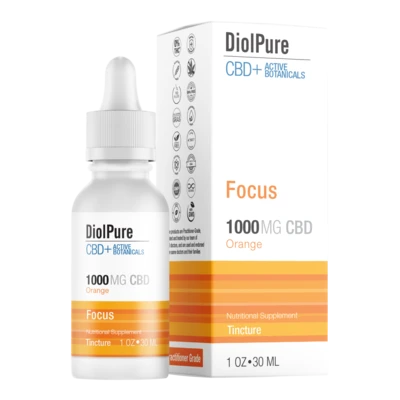Your Cart is Empty
The vocabulary of making molecules
The vocabulary of making molecules
August 23, 2022 - 3 min read
There is confusion in the language of cannabinoid production regarding the terms ‘natural’ and ‘synthetic’. They are not mutually exclusive.
‘Synthesize’ simply means to put together. Synthetic compounds are any assembled from molecular building blocks. Those building blocks can be inorganic chemicals, or they can come from living nature. By convention, medications built from chemical building blocks are called ‘synthetic’, and ones synthesized from plant or animal precursors are called ‘bioidentical’. (Sometimes the term is ‘body identical’; the distinction is a legal one, referring to a pharmaceutical product’s regulatory status.) Strictly speaking, both ‘synthetics’ and bioidenticals are synthetic, in the sense that they are both assembled. Assembly of bioidentical drugs from natural precursors may be an entirely chemical process, manipulated at every stage by humans, or steps in the process may be performed by living organisms, such as bacteria, a method called ‘biosynthesis’. This latter is how plants and animals process nutrients, manage genetic material, and generally stay alive.
When the body manufactures vitamin D in response to sun exposure, for example, this is biosynthesis. Ultraviolet-B radiation absorbs into7-dehydrocholesterol, a steroid metabolite in the skin, which converts to previtamin D3, which in turn isomerizes into vitamin D3. The vitamin D group of fat-soluble secosteroids mediates, among other things, intestinal absorption of calcium, magnesium, and phosphate, pathways that themselves involve more biosynthetic steps.The body is able to synthesize vitamins besides D3. Niacin, for example, derives from the amino acid tryptophan. Vitamin K and biotin are both produced by gut bacteria.
Most vitamins, however, need to be supplied through diet. Vitamin C, or ascorbic acid, is one of these. It is an antioxidant nutrient that inhibits nitrosamines and functions in the synthesis of certain neurotransmitters and collagen. It is an electron donor that serves as a cofactor for enzymes in mammals. Here, citrus fruits manage the biosynthesis for the body instead, producing the ready compound in juice, and more abundantly in peel.
In the absence of fruit, vitamin C can be synthesized from a natural precoursor in the laboratory. This is what’s done for manufactured supplements. The process starts with D-glucose, a form of sugar, whose aldehyde group is reduced to an alcohol, by catalytic dehydrogenation, to form D-sorbitol, whose carbon-2 hydroxyl group is selectively oxydized by sorbose dehydrogenase in a fermentation process, which forms L-sorbose. The carbon-1 hydroxyl group is then further oxidized to a carboxylic acid group. This involves protecting the hydroxyl groups with acetone. The result is the di-acetone sorbose intermediate, which is then oxydized with potassium permangenate, which deprotects the hydroxyl groups and produces 2-keto-L-gulonic acid, which is finally dehydrated to what will tautomerize and stabilize into ascorbic acid, the core of the vitamin C complex. This is called the Reichstein process. A variation of this bypasses the chemical oxidation, and double-ferments the L-sorbose directly to gulonic acid. This is simpler and less expensive, and avoids production of toxic gasses. Produced and food-derived vitamin C are chemically identical.
This is a rough analogue to what happens when the cannabidiol we use in DiolPure products is synthesized at PureForm. They assemble it from natural citrus terpenes, a way of producing pure CBD that avoids using the cannabis plant, or even cannabis terpenes. Cannabis plants vary genetically, are costly to grow and harvest, and can come with pesticide and heavy metal residue from cultivation soil. Terpenes are isoprene-based secondary metabolites, the natural aromatic hydrocarbon compounds, of which more than 30,000 are known, that give plants their smell. It is circular, or ‘cyclic’, terpenes that are present in essential oils. PureForm’s ‘Cyclic Terpene Assembly’ process starts with a naturally-occurring molecule, in other words, and assembles a true bioidentical cannabinoid product. It involves no biosynthesis, moreover, and so is protocol-regulated, predictable, and perfectly reproducible at every step. Just as with commercial manufacture of vitamins, this process assures us the pharmaceutical-grade purity and compositional consistency that you expect in DiolPure products.


Beyond glaucoma: Cannabinoids in ophthalmology
Cannabinoids appear to have therapeutic potential in glaucoma. Beyond this, there may be further promise in ophthalmology.


The endocannabinoid system and bone disease
Stimulation of the endocannabinoid system modulates bone formation and bone resorption. There may be a role one day for targeted drugs in osteoporosis and some forms of bone cancer.


Sex differences, endocannabinoids, and pain
Sex differences in pain perception and analgesia is a burgeoning research field overall. What about cannabinoid analgesia specifically?
Follow us on Instagram



























